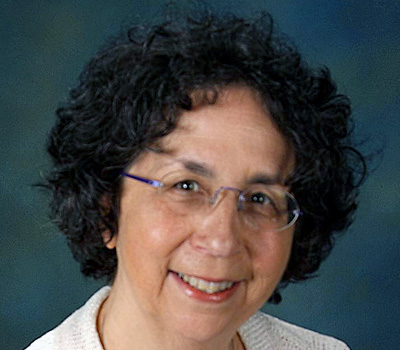Helping patients to be part of the solution to healthcare problems
Imagine what healthcare would be like, if clinicians and delivery systems were evaluated on, and earned compensation based in part on, whether their patients were gaining in their ability to self-manage over time. After 30 years of research, Dr. Judith Hibbard, of the University of Oregon, continues to focus on how patients can have more control over what happens to them when they are in the healthcare system, and how people, in general, can take a more active role in managing their personal healthcare. Her research focuses on behaviors relevant to patients, as well as the behaviors of professionals working in the healthcare delivery system.
Dr. Hibbard's research is especially important for health policy and industry leaders to make effective changes that work to improve the quality of healthcare or constrain cost by including patients and consumers in the solution. Her research team has developed a way to assess an individual's knowledge, skill, and confidence for managing their own health and healthcare. The assessment, known as the PAM (Patient Activation Measure), is predictive of most health related behaviors (preventive, healthy, disease, self-management) and of many clinical outcomes (e.g. recovery after surgery, improved blood pressure, etc.) as well as future healthcare costs. Her research shows that there is about a 34% differential between those who remain or become highly activated (as measured by PAM) and those who remain at the low end of this continuum, over a one year period (after removing the effects of differences in health status and demographics). This demonstrates how important the patient role is in determining costs. Dr. Hibbard's research could revolutionize healthcare by increasing patient engagement, constraining costs, and health outcomes!
Current research includes:
-
PAM Assessment: The PAM assessment consists of 13 questions, with a 0-100 scoring system. Having a way to measure this important concept, has provided an unprecedented opportunity to not only understand why some people engage in behaviors that undermine their health, but Dr. Hibbard has used those insights to form the bases of approaches to helping patients take a more pro-active approach, no matter where they are on this 0-100 continuum. The basic approach is to essentially "meet people where they are" and help them make gains in their confidence, knowledge, and skills. Learning to become a good manager of one's own health, like learning to swim, requires a process where the individual builds up a series of skills and confidence. When patients are approached in this way, where they are supported and understood, based on where they are on this 0-100 continuum, the outcomes are much better and costs are lower.
-
Companion Measure: Dr. Hibbard's companion measure to the PAM assesses clinician's and their support for patient activation. This addresses how clinician's need to change to better support activation in their patients. Dr. Hibbard is also interested in testing messages that will resonate and motivate people who are at different points along this continuum. She hopes to learn if a message created specifically for a less activated person might increase use of preventive services.
- Tailored Care Pathways: Dr. Hibbard is working on the development of tailored care pathways, that take into consideration both the patient's clinical profile and their PAM score. Dr. Hibbard hopes to learn if there would be better outcomes and lower costs if, patients, had different levels of support depending on the severity of their condition AND their activation level (e.g., their need for more support in learning how to manage their condition).
Bio
Dr. Hibbard first became interested in public health and health services research when she had her daughter and realized that the way healthcare is organized makes it difficult for patients to have control over what happens to them and to have their preferences and their needs honored. She saw how the healthcare system disempowers patients, and how this was counter-productive for patients and ultimately for the system. At the time her daughter was born, Dr. Hibbard had not yet finished college and these insights motivated her and shaped her career direction. As Dr. Hibbard's education progressed, she became intrigued by the potential that research has in answering questions that can lead researchers to places they had not previously imagined possible. Over her career her research has always focused on understanding the patients perspective and patients needs. Her work also includes a clear focus on how clinicians and the health care delivery system can more effectively support and engage patients. She lead the research team that developed the Patient Activation Measure (PAM). Now researchers and healthcare delivery systems all over the world are using her measure. The PAM has been translated into 23 languages and is being used to improve care with patients in many different types of healthcare settings.
In her free time, Dr. Hibbard enjoys spending time in the beautiful Pacific Northwest and horseback riding.
Website: http://pages.uoregon.edu/jhibbard/


